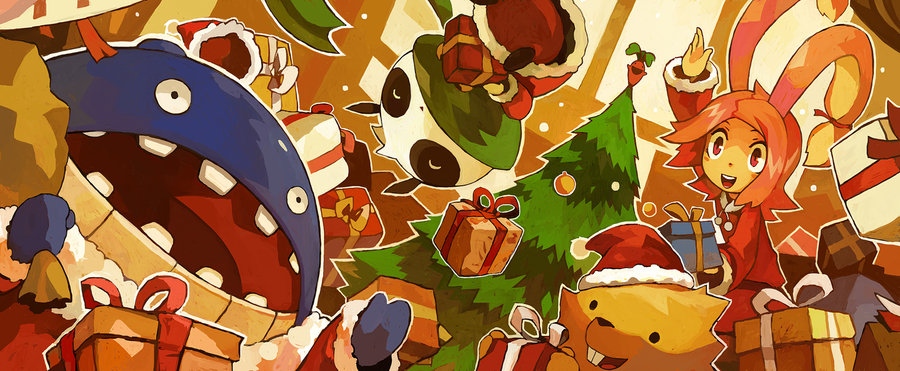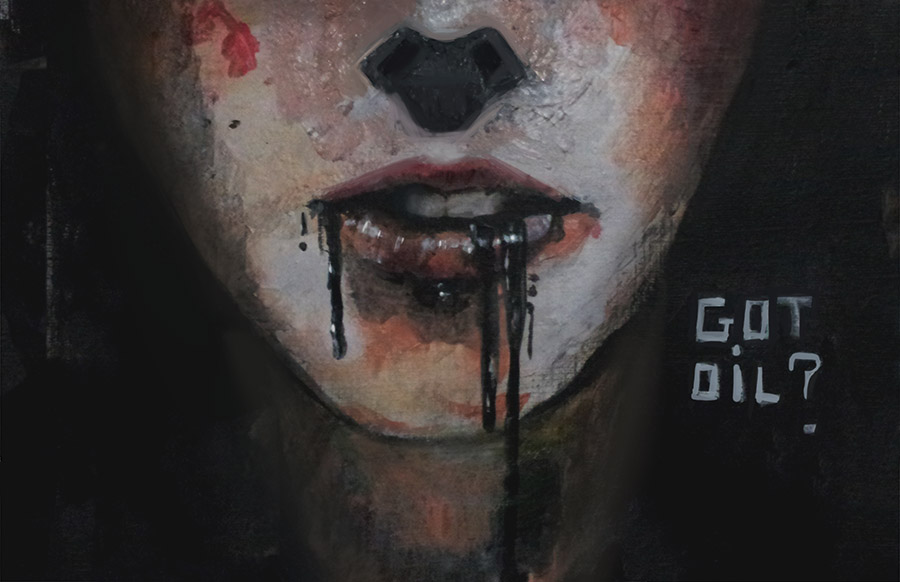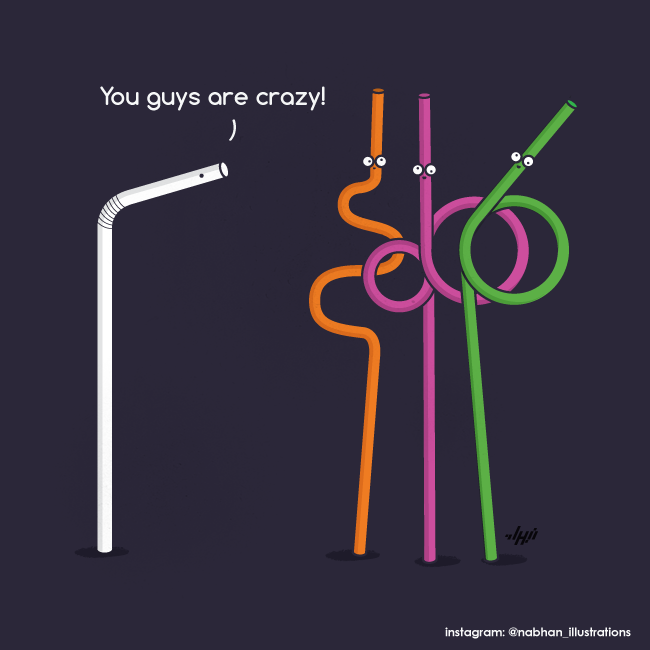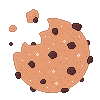Good art, bad art, and you. It really depends on you.
And if you like a certain type of art, it is good while I may personally hate it. Many people enjoy the art work in Bleach, they will say that it is clear. I would say that it is devoid of life leaving panels that feel empty to me. You can say that same thing about some other artists, it is up to you to form an opinion, and agree or disagree.
When you come down to it though, it's very personal.
No matter how much you critique a piece it will always have people that love it.
For instance, I personally feel like Oda's art direction is simply brilliant. For me he embodies what great dynamics should be, he does this through his very fluid artwork, while his color excel in both use and complimentary of colors as well as color perspective create breath takingly beautiful compositions that I love. Yet there are people that I know that would whole heartily disagree with me on that point.
The reason is because beauty is in the eye of the beholder.
Art is really a preference thing, and your preference is not my preference. I personally really enjoy well done sketched work, because it captures the raw emotion that the artists was going for at the time. This is often reduced in impact when they take it to the final product illustration.
Technically Skilled
What we have talked about up until this point is emotion. If you want to understand comic art, you will need to understand the process used and how it is made.
But herein lies the trap. If we simply focus on the technical aspect of the art form by itself, when you look at the differences, you will need to realize the importance of distinction. Mainly people, critics included fairly to remember that there is a difference between art and art style.
So while art can be judged more objectively when you understand the process, how do you do that? What are the criteria that play a role in how you distinguish good from the bad?
This list is helpful in doing just that.
- Good Art style Doesn't Automatically Mean Good Art
- I've read series with unspectacular art style, however full of emotions and never batted an eye over the art. I've read series with good art style, but with mediocre use of art. Although they're well illustrated, they lack the most basic elements to give it a dynamic feel.
- Interacting With Objects
- Figures should interact with objects in a believable way.
- When a figure is supposed to stand on a rock for example, the figure's feet and pose should be drawn correctly, otherwise it looks like he's floating above the rock.
- Emotions
- Both comics and manga have the advantage of being allowed to show exaggerated emotions.
- An artist's job is to convey emotions. The reader should sympathize with the figures when they're angry, sad, desperate or whatever the scene calls for.
- Correct Use Of Perspectives
- When you think of perspective drawing, the first thing that comes in mind are maybe buildings and geometrical forms. However a good artist should also be able to draw living beings (humans, animals, plants) from different angles of view. Bad artists tend to draw their figures always from the same perspectives.
- Paneling
- The comic artists' job is to tell a story with pictures. Good paneling creates tension. Panels should not only have a pleasant flow while reading, they also are part of the story telling.
- You might find it useful if you pay attention to these things in particular: shapes, how lighting works (the shadows, shading, and highlights), line width, composition and layout, foreground/background and perspective, anatomy and proportions (which can be unrealistic and still look good), textures and effects.
Look at the art for multiple series, over time eventually you'll start to notice what works, what doesn't, and when you should just ignore the flaws. But be aware that the rules can be broken to good effect and you may be biased to the results. Once you become good at being a critique, you wont enjoy things as much, since everything is flawed
I feel like sometimes it is easier to focus on the weight and emotion of a piece without going into the actual hues and tones. When I do that I usually handle the piece as if I was coloring line art. Manga fans will know what I am talking about. But it can be tricky if you aren't interested in digital art.

While the process is pretty easy, it did take me a little while to master.
But luckily I am going to share the steps with you.
As I said there are a couple of ways to accomplish this.
The first is the most basic. Setup the Photoshop project like this:
Create two layers.
The top layer will have your line art on it, you will want to set the layer blending to multiply, which will lay this layer of your bottom layer. The bottom layer will be filled with whatever color you want the background to be and then paint in the bottom layer. This will allow you to drop out the white of the scanned line art and have the black overlay and color you draw on the layers below it.
There is another technique you can use to set up your line art turning it into layer without any white, for this you will need to know how to use channels.
With your line art open, go to the channels panel. Drag one of the channels to the selection icon at the bottom of the panel (dashed circle). With that selection still active, go back to the layers panel. Create a new layer and fill the selection with black.
Or, even more fun: instead of just doing a fill, create a new fill layer and the selection will become the layer mask for the fill layer. Then you have easy color control for the line art. I either use clipping masks, or I use the magic wand and go to "select > expand > 3px", then leave the selection up in a separate layer from the line work while I draw.
Some of the nice things with this work flow is that you can easily add layer effects to the line art layer or use the line art layer as a layer mask for effects above it.
Simple isn't bad.
Let's say it again so that it sticks.
Simple isn't bad.
This should be clear from the beginning but people think of simple as a form that lacks depth or mature themed. It doesn't it is a form, and it depends on how you use it.
For real beautiful simplicity, this is a hard skill to master and takes a lot practice until you are skilled, and even more until you can master it.
Think about it, the less you have to illustrate means that there is more than will show. Disney may seem simple, but their characters were extremely complex and took a lot of skill to draw. This is a good example, because, the whole point of making a "cartoon" is for the sake of making it realistic. It is an image that has been boiled down to its essence.
Because of this the simplest images can convey the strongest, most pointed messages.
Before you start sketching and call it quits, I will say that there are many failed attempts at simplicity.
You need to learn to run before you can crawl, and Picasso's most famous works are some of his most graphically simple and abstract. Yet he was still highly skilled at realistic rendering. Her and understood the importance of accurate light, shadow, line, and compostion, and he knew how to make them work togther with a simply style.
I can't find a link right now, but there is an artist which you will find from time to time in the New Yorker. They produce beautitful rendisition, and yet they get away with simple geometric shapes, most without captions or anything. Simple isn't bad it just depends on how you use it.
The drawings in a comic should suit the story, or the mood you're looking for when telling the story. In this sense, simple doens't necessarily mean bad, and sometimes you can also mix very detailed parts with very simple art. Think about Liberty Meadows by Frank Cho, the first one to come to mind. Be careful that simple doesn't have to mean immature; it's a common misconception. The artist must know what they're doing and decide to go for a simpler style.
Look at xkcd, this is an example of simple that is also a sensation, even thought the story is literal told through stick-figures.
My recommendation to you as an artist are this: Ask yourself if drawing your comic in a simple style enhances the mood of the piece or detracts from it. If it works then use it.
You should remember, there are comic masterpieces out there that are in a simple style, it is totally depended on what you are trying to do . Think of it like this, a simple style will force you to let go.
Even the greatest comic artists of all time had panels and details that they weren't proud of. It's so hard but we have to let go of our mistakes at some point, and keep moving forward.
Whatever style you choose, and this is important because it is basically your ground work, please sure that you make the choice that is best for your comic. There is nothing worse than having the story suffer due to the mismatched art style.
If you are curious for more thoughts on this, I have two suggestions: read the book called Understanding Comics by Scott McCloud once you understand what he is trying to teach you you can go over to Netflix and watch first episode of the TV show Abstract.
Master studies are a great learning tool if you know how to approach them. So long as they are not an exercise in creating a copy of another work, but rather a window into another artist's mind.
The reason drawing from life is encouraged is because you want to draw things how the human eye sees the world.
Drawing from a photo you are drawing how the eye sees what the camera sees.
It's not the same.
Ask yourself this:
- This area here has lots of fine detail, but over here it's all just loosely sketched in.
- She used all these very de-saturated middle tones throughout, only right here there's this sudden swatch of intense orange.
Is drawing from photos bad? Nope! Just not as good as from real life.
For the sake of argument let's say you're learning from photos. It depends on your goal. For example, it's best to practice anatomy from real live figure models. Well if you don't have access to those you're stuck with photos.
Life drawing classes are also good for seeing how other artists solve certain problems. "How can I portray a background in a studio setting simply but clearly?", that sort of thing. Now you could draw photos day in and out for days until you could copy them perfectly, but if you're just focusing on copying what you see, that's the skill you're most training, and you can expect to have learned very little about actual anatomy. And the ability to solve problems is then left out, because the photo doesn't have the same problems that you will encounter in a life drawing class.
But class isn't the only thing.
To really get the most out of them you have to know enough to be able to ask the right questions.
That doesn't mean you shouldn't do them; they can be fun and educational in other ways. But if you go too far down that road it can be hard to break away from, when you're trying to make your own work and start comparing it to the studies.
Which brings me to master studies. Master studies are excellent because it keeps you from spending massive amounts of time reinventing the wheel. If you copy them just to copy, much like the photos, all you'll train is your copying skills. If you approach them as an anatomy study, you'll learn anatomy much in the same way you would from photos and like a photo you will be copying the stylistic choices.
That means that there is a danger to doing that. But at the same time you can learn a lot about how to approach your own figure drawings by watching and copying how other artist's approach theirs.
A master has already solved all the drawing problems. Take those answers and keep them in mind while drawing from reference.
The study can be of anything from any artist. How the lighting is set up, how colors are used, composition etc. Producing an exact copy is not needed. You just want to find the master's answers to the problems you are having.
Mix it up!
Just so long as you're aware of what you're practicing, why, and any potential downfalls to it, you should be fine.
 Merry Christmas! Stay Crazy
Merry Christmas! Stay Crazy


Growing up, life didn't seem like it was any different than it was for my "American" friends. But some of them thought that it was. They looked at my family life like it was a strange and foreign thing that they would never understand.
When I was young it bothered me.
I am a first generation Mexican-American. My parents moved to the US in the late 1980s before I was born. My father was hired as a curator at a small museum in Southern California. And as a young art historian he was thrilled for the "amazing" opportunity that it presented him with. He worked there for five years until I was born. While I didn't realize it then, it became clear later that he choose to leave the job that he loved for a position that paid better. He worked as a book keeper and as an accountant (not sure if there is a big difference here, he always described the work at the companies as such) for various companies for over a decade. In recent years he was tried to find his way back into his calling. Art.

It should come as no surprise that I haven't received my passion for art and culture from him (and it is an important aspect of a child's life.). Growing up I was able to spend countless hours with him exploring the work of old masters from all the different epoch as well as modern art movements like Kieth Haring and his contemporaries. These are priceless memories and I can't imagine a childhood being more fulfilling.
For a Mexican girl childhood ends at fifteen. Or at least that is when she will have her coming of age celebration. While my class mates were busy planning for their sweet sixteen I was already ahead of them and that left some of them confused. But it was fine by me. When I turned sixteen it was just any other birthday party. But my fifteen candles, my quince años, was a celebration more special than you could ever imagine.
My Quinceanera

When I was growing up, that is, from age twelve until fifteen I could hardly wait for mis quince años. It was this huge moment and I thought that it would be totally world changing (it wasn't, but in my 15 year old mind it sort of was). Some of my cousins had already had their celebration, and it was a fantastic experience just being invited to the party. I couldn't imagine what it would be like actually being the be the one everyone was paying attention to. Would I be frightened? Excited? It was all a jumble of emotion for me that wouldn't subside until the week before I turned fifteen.
It was also more than a little stressful. But what could I expect right?
Back then the quince wasn't that commercial, it was a time when the Waltz still mattered (though I am not alone in thinking that it still does). As you can imagine from my upbringing I was more than happy to design my own invitations. Today you can buy them, pretty much like everything else but most of them lack the same heart (at least imo). My mother still has a copy of my invitation on her night stand tucked into the mirror. The turquoise paper has begun to fade slightly, and the ink has lost its glance ever so slightly, or it may just be that I just remember it being somehow more vibrant, more filled with life. Its brilliance can surely be a memory, but its purpose and value then in helping me come of age will always be strong and vibrant as they were on that day.
And while it is now a memory for her, like it is for me, in the end it was just another step toward being the person that I am today.
For that reason it was pretty world changing. But when I got to the celebrations of younger cousins, or, those of friends and acquaintances I realize what a celebration left unchecked can really be like.
We didn't have a lot of money when I was growing up and it felt like having a party of this size would be too extravagant. Well, extravagant in measure. What it turned into was a tasteful day filled with sentimental memories that would fill me with joy, but also a little sadness. It was an end, and at the same time it would be a new beginning. A start into a world that I had only seen from the sidelines. The next year was a time of transition and further move toward adulthood.
Even though many years have passed since it was an important first step.
The Teen Years
I really break the teen years into two halves. The first half, which would be from age twelve to fourteen and then the years that follow.
The first half was care free, easy and fun.
And while I can't say that the years that followed were categorically different, there was a definite change in the way I perceived my life after that point.
Foe one I felt an increase in the amount of responsibility. It was in the expectations I felt others had on me, but a change in what I expected of myself as well. A good example of what I mean is in how my friends perceived their lives (my non-Mexican-American friends). They went about their lives with the same sense of carefree serendipity that I had enjoyed. And even once their coming of age came and went they were still (though this sounds arrogant) more childish in their views and actions.
This continued on until college where things began to normalize a little bit more. Some of my friends continued to party and take life easy but others became more responsible.
Did quince años play an important role in this? I would like to think so, I think that they are important. At least, when they are given value, meaning, and purpose in a young woman's life. I can't say that this is always the case. I can't look at the modern celebrations with all of their pomp and pretend that they have the same meaning. It never crossed our minds to rent a limo, to treat it like something out of a movie, or what other non-sense I have seen. It isn't a secular celebration, and without the spiritual aspect it has in my mind little value. But then I may just be old fashioned.
PS. Marry Christmas everyone!

I use both acrylic and oil for portraits. It just depends on what I want to achieve. I think you can get the same look with either however, so it really just depends on what your actual goals are. Both have a strength, so that doesn't mean that they are 100% the same. You just need to go about it differently with one.
For portraits I tend to grid it out regardless, this is how I got used to working so it is just part of the process for me.
Grids are not a must, especially if you are good at eye balling it, but with faces tiny changes can be the key to getting a likeness. So I print my reference at the same proportions as my canvas.

Then I do a grid over the printout and the same on the canvas with willow charcoal. Then I sketch in the likeness, using the grid to refine it until I'm satisfied that it is going in the right direction. It should be clear that the likeness dosn't need to be perfect, you are going to be painting over it soon enough, just close enough that you see the likeness. I'll often use white chalk the charcoal to give myself just the basics of form/light/shadow. This also does not need to be a finished piece, but it makes it easier to see mistakes in the sketch. Charcoal will change your paint., especially with your first layer. So only use it when you feel like it is right for you. For example charcoal mixed with yellow is going to make it green.
It will make white gray.
It will change the chemistry of the paint and hence things like texture and drying times. It is going to affect every brush stroke. It will utterly and completely destroy any transparent qualities in any of your pthalos or alizarins so this will rule out glazing and layered painting like in a traditional style. But again it has its place.
Actually, my painting instructor recommended doing a more complicated under painting. Well, complicated is the wrong word, think of it sort of sketch of the patterns of lights/darks in paint before starting, and the technique has helped me a lot.
Though I will only do this when I really need to.
I do mostly plain air painting, and it's helpful to have that as a reference point when the light inevitably shifts. It also helps me get colors more accurate; in my experience, it's easier for me to look back and forth between a subject and a tinted canvas than it is for a plain, bright white canvas.
Some painters deliberately let their pencil show through, especially for intricate laces.
Any fandom will have some bad apples in it, it is human nautre and it is unavoidable. But how many people does it take to ruin it for everybody? I think that no matter the size you will find that the number of people stays in proportion. And I would say that that number hovers arouns 5% with the rest of the people being various levels of normal. This does not change with the size of the fandom, yet, the number as you will see plays a role in how they can make a fandom overall "awful" in many aspects.
So let's run the numbers.
Your fandom, this is hypotheitcal, has a hundred fans, when we use the 5% rule that means that you have five people who are going to be complete pricks to everyone they interact with

But the thing is, five people are pretty manageable as a whole. When your community contains 95 other "normal" people they can disengage from the other trouble makers. They can be left them out of events or whatever else you may have planed.
But let's add a zero to the number, you now have one thousand fans.
Taking the 5% rule that we laid out above, you now fifty people are going to be nightmares for everybody else in the community.
What makes the difference here is that fifty is a big number. That is half of the community that you had just a moment ago, and while it may not seem like much, they can easily sustain a message board with that number of userers.
But that is one niche message board that you have to worry about, it is still a small enough number that one board that only these "fans" and nobody else will ever visit. Like this the problem can be contained and they will jst be known as trouble to the cmmunity at large.
Big Numbers Mean Big Trouble!
You have surpassed all of this and have made a really successful property that has gained lots of fans. You don't have hundreds, or thousands, you have one hundred thousand fans yet you are dreading that nasty that 5% problem.
The trolls have grown and you now have to deal with five thousand unrepentant assholes. That is a lot of ass in that hole and you need to see it as something besides a self-contained problem feeding off of itself.
With five thousand people you will keep seeing them re-surfacing in all of the popular fan communities, spreading their spite and making every effort to control the popular oppinion. And with that many people you will not be able to manage their behaviour, isolate them, or shield your true fans.
This number is a problem and with that many trouble makers you can expect that a certain number will visit your convention venue, in fact that many people could completely fill a small convention.
For most people this is not valid though, becuase being a fan requires active participation. And most people will never fill this role. People who felt that they were fans at one point will drop out of active participation, leaving the fandom and with the dropsouts you will also loose some of the toxic fans, but not many. The drop off of normal fans to toxic cans will not be proportional.
A loss of fans can happen because the TV show went off the air, or because the toxic fan base drove people away.
That is what has happened to Rick and Morty. Don't get me wrong, the populararility of the show is huge, but you will notice that toxic fans have begun to take up more space.
The show's normal fans have begun start to leave the central fandom and in essence have only left the worst viewers to dictate how the show should progress. What's left are the obnoxious assholes who throw tantrums over shitty nugget sauce.
It's a distillation process, as the more "dedicated" fans are the ones who stick around and continue to identify with the work. These more dedicated fans are probably more likely to be toxic than the average viewer, in a lot of ways.
Steven Universe is a network-produced television show with something like two million regular viewers. Even if only a tenth of those people would identify as fans, that's a staggering number. Even a small proportion of toxic fans would constitute a large toxic community.

 Merry Christmas! Stay Crazy
Merry Christmas! Stay Crazy





 Now it is time for a cookie!
Now it is time for a cookie!